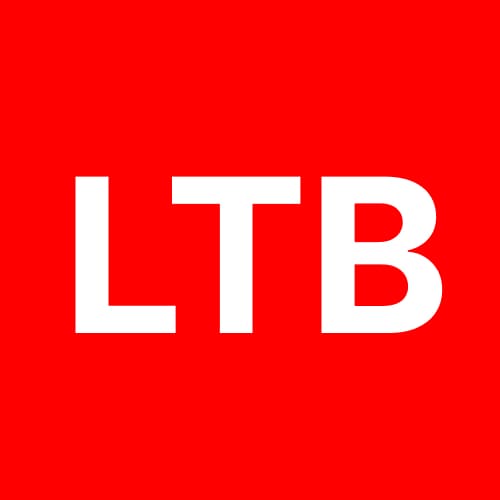
HOME / BLOG / STATISTICS
Buy Now, Pay Later (BNPL) Statistics 2025: 95+ Stats & Insights [Expert Analysis]
- October 17, 2025
- Bill Nash
- 3:57 pm
In this comprehensive guide, you’ll find the most up-to-date buy now pay later statistics (global and regional), adoption trends, default metrics, and forecasts.
Global BNPL gross merchandise volume (GMV) is projected at US$560.1 billion in 2025.
BNPL global user base is projected to surpass 900 million by 2027 (big growth from ~360M in 2022).
41% of BNPL users reported paying late on a BNPL loan in the past year (LendingTree survey).
The U.S. Consumer Financial Protection Bureau (CFPB) published a representative BNPL study sampling pay-in-four products in January 2025.
The average BNPL transaction amount in the U.S. is approximately US$135.
BNPL monthly spending per user grew ~21% from June 2024 to June 2025 in one dataset (Empower).
North America held the highest BNPL revenue share (~29% of global revenue).
Asia Pacific is the fastest-growing regional BNPL market with projected high CAGR to 2030.
Many BNPL customers are 35 years old or younger (Empower data).
BNPL is widely used for fashion/clothing, electronics, furniture, beauty and groceries.
In 2024–2025 several major BNPL providers (Klarna, Affirm, Afterpay/Block, PayPal) reported growing GMV and user counts.
BNPL revenue (global fintech revenue measure) was reported in the billions of USD annually (multiple market sources).
BNPL users are more likely to be Gen Z or Millennials than older cohorts.
Lower-income households show higher rates of missed BNPL payments in many surveys.
Some surveys show ~26% of Americans are more likely to buy if BNPL is offered.
BNPL is increasingly used for groceries and essential purchases, not just discretionary items.
A large proportion of BNPL users (survey dependent) hold multiple active BNPL plans at once.
BNPL approval rates (simple frictionless approval) historically have been high — many users are auto-approved at checkout.
Many BNPL products are marketed as interest-free for short terms (e.g., four payments over six weeks).
BNPL adoption increased meaningfully after COVID-19 as e-commerce accelerated. (Industry consensus)
Some BNPL providers now report loans to credit bureaus (Affirm, others), and FICO plans to incorporate BNPL data into scores.
Growing regulatory attention: CFPB, EU regulators, and national authorities are studying consumer protection for BNPL.
BNPL can increase average order value (AOV) for merchants compared to single-payment checkout. (Widely reported merchant metric)
In some fashion/retail segments, return rates on BNPL purchases can be significant (reported in some EU analyses).
The number of merchants integrating BNPL options (via e-commerce platforms) rose sharply between 2021–2025.
BNPL volumes are seasonal with spikes around holidays, back-to-school, and major sale events. (Industry trend)
BNPL product models vary: Pay-in-4, interest-bearing installments, revolving options, split-pay. (Market fact)
Some BNPL platforms charge merchant fees (percentage + fixed fee) for each transaction — a revenue source. (Provider disclosures)
A portion of BNPL revenue also comes from late fees where permitted; many providers advertise “no interest if paid on time.”
BNPL providers advertise frictionless checkout and high conversion lifts for online retailers. (Marketing claim backed by merchant case studies)
BNPL adoption among merchants is highest in retail & fashion, followed by electronics and home goods.
BNPL can be offered in-store via POS partnerships as well as online. (Adoption trend)
In some markets BNPL merchants share return/refund friction because refunds must reconcile with installment schedules. (Merchant operational issue)
BNPL’s share of e-commerce checkout options ranges widely by market and merchant type. (Market variation)
Many BNPL users report using BNPL to “bridge a paycheck” — i.e., short-term cash flow. (Survey commonality)
A nontrivial share of BNPL users lose track of what they owe (surveys report ~31% in some datasets).
BNPL use is not confined to low earners — some higher-income consumers also use BNPL for budgeting.
BNPL transactions can be small average basket sizes vs. longer-term loans (but volume makes overall impact large).
BNPL has spurred competitive responses from credit card companies (installment features) and banks. (Market response)
BNPL providers partner with platforms like Shopify, WooCommerce, Magento to accelerate merchant onboarding.
BNPL gained traction in mobile commerce where quick checkout matters. (Channel trend)
BNPL user growth often coincides with promotions (0% campaigns) run by providers and merchants. (Marketing tactic)
BNPL repeat usage: many customers use the same BNPL provider multiple times per year. (Provider metrics)
BNPL merchant adoption can improve cart conversion rates by several percentage points (case studies).
BNPL product fraud and chargeback risk is a known merchant concern (fraud detection teams required). (Operational risk)
BNPL providers vary in risk underwriting — from soft credit checks to hard bureau pulls. (Product mechanics)
BNPL can be a gateway product for fintechs to cross-sell other financial services (e.g., savings, cards). (Business model)
BNPL revenue growth projections often show double-digit CAGR in forecasts through the late 2020s.
BNPL has attracted private equity and investor interest, driving capital into fast-growing players. (Market financing)
BNPL use cases expanded into travel, with some users financing trips and vacations.
Some regulators are considering clearer disclosure rules for BNPL (fees, late penalties, effect on credit).
BNPL is used by millions of consumers in major markets (US, UK, EU, Australia, APAC). (Geographic spread)
Some market reports list Klarna with ~100 million users globally (largest consumer base among BNPL providers).
Affirm reported tens of millions of active users and strong GMV growth in early-to-mid-2020s.
PayPal and other established payments firms launched BNPL or installment options to defend market share. (Competitive dynamic)
BNPL providers report merchant success stories with growth in AOV and repeat customers. (Marketing collateral)
BNPL has been integrated into marketplaces (Amazon, eBay options via partners). (Channel expansion)
In some countries BNPL is evolving toward regulated small-loan frameworks, tying it to consumer credit rules.
BNPL product transparency (clear repayment schedule) is often touted but user understanding varies. (CFPB & survey findings)
Merchant economics: BNPL fees can be higher than standard card processing but justified by conversion lift. (Merchant tradeoffs)
BNPL default rates remain a focus — late payments surged in some 2024–2025 surveys.
BNPL has led to new fraud patterns and identity verification needs for providers. (Security trend)
BNPL adoption among small merchants is rising due to plug-and-play integrations. (SMB acceleration)
BNPL product terms (installment length, fees) vary widely between providers and countries. (Product variability)
Some BNPL providers offer merchant settlement guarantees (they pay merchant upfront, assume credit risk). (Business model)
BNPL has influenced consumer payment preferences, especially among younger cohorts preferring installments > cards.
BNPL marketing often emphasizes no interest if paid on time, but late fees and other costs can apply. (Consumer caveat)
Industry estimates vary, but BNPL could represent a significant share of specific retailers’ checkout volume by late 2020s. (Forecast consensus)
BNPL’s role in consumer debt stacks is being tracked relative to credit cards, personal loans, and overdrafts. (Policy/regulatory concern)
BNPL user satisfaction surveys show high checkout satisfaction but mixed long-term views when late fees occur. (Mixed sentiment)
BNPL adoption among older adults (50+) is lower but growing slowly. (Demographic trend)
BNPL product innovation includes pay-later cards, virtual cards, and subscription financing. (Product evolution)
BNPL increased merchant competition because smaller retailers can offer similar payment flexibility as big players. (Market leveling)
BNPL providers invest heavily in risk analytics and consumer underwriting to manage losses. (Operational investment)
BNPL is used in health & wellness (some regions allow financing of elective healthcare). (New verticals)
BNPL financing is sometimes excluded for high-risk merchant categories (age-restricted goods, gambling). (Policy/practice)
BNPL merchant uptake often correlates with higher web conversion rates for mobile shoppers. (Conversion evidence)
BNPL is part of a broader trend in embedded finance inside commerce platforms. (Strategic trend)
BNPL has spurred partnerships between fintechs, traditional banks, and retailers to share distribution. (Ecosystem development)
BNPL’s environmental/service impacts: increased returns and logistics handling for merchants in some categories. (Operational externality)
BNPL users who pay on time can benefit from budget smoothing without interest—if they manage repayments well. (Potential consumer benefit)
BNPL provider valuations surged during growth years, though profitability timelines vary by company. (Investor reality)
BNPL is evolving with more transparent disclosures in response to regulator and consumer pressure. (Regulatory reaction)
Some BNPL providers have started offering credit-building features when repayments are reported to bureaus. (Product shift)
BNPL acceptance at point of sale influences brand perception for merchants (flexible payments = modern brand). (Marketing effect)
BNPL has shown higher adoption rates in markets with strong mobile payments infrastructure. (Regional pattern)
BNPL default/loss provisioning is a key line item for provider financial statements. (Accounting reality)
BNPL product comparisons often emphasize length of term, APR if any, and late fee policy. (Consumer decision factors)
BNPL offerings for B2B — small vendor financing / supplier pay later — are emerging in some markets. (B2B spillover)
BNPL marketing budgets remain significant as providers compete for merchant and consumer share. (Competitive spend)
BNPL callouts in checkout pages (badges/buttons) materially affect click-through and selection of BNPL at checkout. (UX effect)
BNPL customer support volumes increase with returns, disputes, and late-payment inquiries — an operational cost for providers. (Customer ops)
BNPL is increasingly included in omnichannel loyalty programs to incentivize repeat purchases. (Loyalty integration)
BNPL has led to new analytics needs for merchants (cohort performance, repeat usage, AOV by payment method). (Data requirement)
BNPL use in emerging markets shows rapid uptake where traditional consumer credit access is limited. (Financial inclusion nuance)
BNPL providers often emphasize merchant onboarding speed (hours/days vs. weeks for traditional payments). (Go-to-market advantage)
BNPL’s lifecycle: acquire consumer → facilitate purchases → cross-sell financial products is a common roadmap. (Strategic pattern)
BNPL usage is tracked by central banks/regulators as part of household credit dynamics in several countries. (Macro monitoring)
BNPL continues to innovate on UX (one-tap checkout, virtual card, QR codes) to reduce friction. (Product UX trend)
Industry forecasts show BNPL continuing to grow in usage and GMV through the late 2020s, but with more regulation and disclosure expected.
Ready to Grow Your Business?
At Marketing LTB, we specialize in helping businesses like yours thrive online. From strategic digital marketing and branding to web development and social media management, we offer the tools and expertise to elevate your brand and drive real results.
Let’s build something amazing together, get in touch with us today!

About Marketing LTB
Marketing LTB is a full-service marketing agency offering over 50 specialized services across 100+ industries. Our seasoned team leverages data-driven strategies and a full-funnel approach to maximize your ROI and fuel business growth. Discover how our expertise can drive revenue for your business>

About the author, Bill Nash
Bill Nash is the CMO of Marketing LTB with over a decade of experience, he has driven growth for Fortune 500 companies and startups through data-driven campaigns and advanced marketing technologies. He has written over 400 pieces of content about marketing, covering topics like marketing tips, guides, AI in advertising, advanced PPC strategies, conversion optimization, and others.
